ALL 12 Verb Tenses in English… EXPLAINED! 🔥
A simple explanation of HOW to form and WHEN to use each of the 12 tenses in English grammar.
Are you currently stuck at the “Intermediate barrier”? In my DAILY QUICK FIX course, I personally give you daily lessons that will help you finally speak Advanced English.
► CHAPTERS:
00:00 Different ways to use MUST and HAVE TO
02:39 Present Simple Tense
04:21 Past Simple Tense
6:33 Future Simple Tense
8:26 Present Continuous Tense
9:41 Past Continuous Tense
11:06 Future Continuous
12:49 Present Perfect Tense
15:35 Past Perfect Tense
17:23 Future Continuous Tense
19:27 Present Perfect Continuous Tense
21:34 Past Perfect Continuous Tense
22:38 Future Perfect Continuous Tense
* * *
TRANSCRIPT:
So many tenses in English. I speak, I spoke, I have spoken, I had spoken, I will have spoken, I will have been speaking. Well, listen, in fact, there are only 12 tenses in English. And in this video, you're going to learn how and when to use each tense, and you're going to see actually that English is not so difficult. So let's go.
If you want to use the word play in Spanish, there are 50 different ways that you change the word play to indicate who is doing the action and what tense the action is happening in. 50. In English, there are 4. Play, plays, playing, and played. I mean, English is easy, right? Well, that part is easy. Now we just need to know when to use each one and a few of the little grammar words too, to help us indicate which tense we're talking about.
So listen, really easy. When we're talking about tenses, everything can be divided into 3 categories. Things that are happening in the present, now, things that happened in the past, like 5 minutes ago or yesterday, or last year, and things that haven't happened yet, but they're going to happen in the future, like in 5 minutes time, tomorrow, the year 3000.
Then within each of these 3 categories, there are just 4 different types of tenses that we have, they are known as the simple, continuous, and a little bit more complicated, the perfect and the perfect continuous. So to make this lesson as easy as possible for you, we're going to divide everything into those 4 categories. We'll look at the simple tenses first, both in the present, past, and future, then the continuous tenses, then the perfect, and then the perfect continuous.
And before we start, this lesson comes with a free PDF that you can download there. And that includes a summary of the lesson, plus all the examples I give you, and a lovely test to test your knowledge on these 12 tenses of English. So let's get started with the easy one, the simple tenses.
It rains. It doesn't rain. Does it rain? This is the present simple tense, and we use this to talk about things that happen in general. Routines, facts. It's a really common tense and a really easy one to form. We basically take the infinitive or the base form of the verb like play and use it with the person. I play, you play, we play, they play.The only difference is for he, she, and it, where we need to add an S. He plays, she plays, it plays. Simple. That's why it's called the present simple.
Here are some examples of this. I get up at 7 o'clock every day. It's a habit, it's a routine, so we use the present simple. We leave the house at 8:30. Again, it's a routine. She plays the violin. That's just a general fact. It's true. She plays the violin. And water freezes at 0 degrees Celsius. Again, it's a fact. It's a scientific fact. So we use the present simple. Only thing you need to remember with this tense is to add the S for the third person. And with the question instead of do, do you like football? If it's the third person, he, she, or it, we need to use does. Does she like football?
[Due to character restrictions, the rest of the transcript is unavailable]...
* * *
I hope you guys enjoyed the video and don't forget to hit that like button & Follow.
-
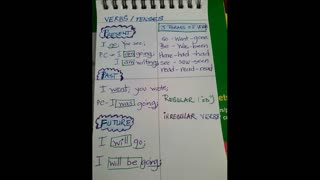 4:08
4:08
BismillahSchool
1 year ago*Verb Tenses- #Lesson A; #English for Beginners;
8 -
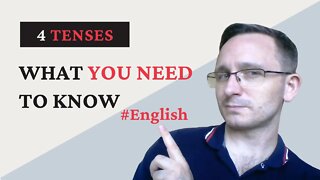 11:04
11:04
TeacherKenneth
2 years agoEnglish Tenses: What YOU NEED to Know
14 -
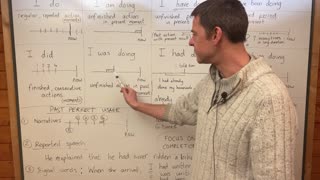 9:51
9:51
MrSkypelessons
2 years agoAll the past and present tenses
278 -
 0:42
0:42
Dualistic Unity w/ Andrew & Ray
5 months agoCan you not tense about being tense?
-
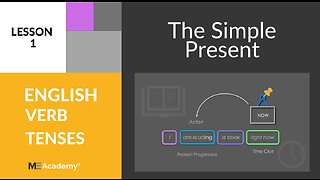 1:48
1:48
English Grammar Made Easy
1 year agoEnglish Grammar Lesson 1: The Simple Present Tense
341 -
 6:40
6:40
Globalearning Academy
2 years agoEasy English Grammar: Present Simple Tense
392 -
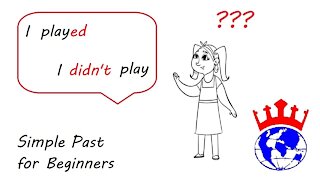 9:31
9:31
KingsEEC
2 years agoSimple Past Tense 1 (Beginner)
13 -
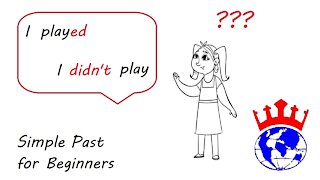 5:37
5:37
KingsEEC
2 years agoSimple Past Tense 2 (Beginner)
16 -
 1:53:01
1:53:01
Learn English With Teacher Joe
2 years agoLearn English Grammar | The Verb To Be | Present Tense 1
230 -
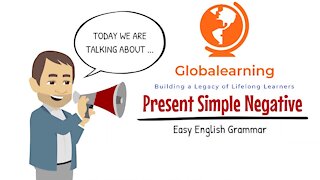 6:07
6:07
Globalearning Academy
2 years agoEasy English Grammar: Present Simple Negative Tense
66